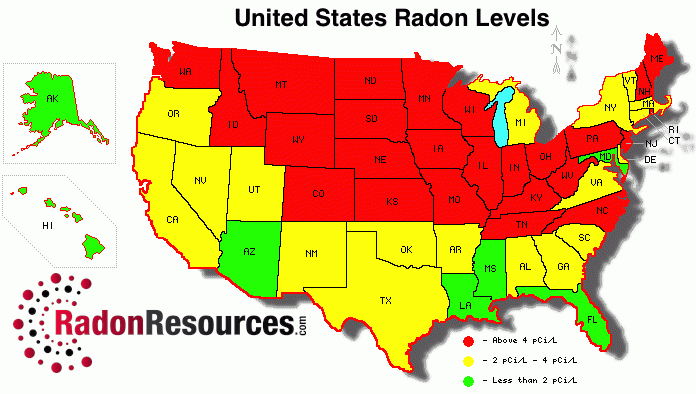What is radon gas? Is it harmful?
Is radon really bad for you?

Breathing radon over time increases your risk of lung cancer. Radon is the second leading cause of lung cancer in the United States. Nationally, the EPA estimates that about 21,000 people die each year from radon-related lung cancer. Only smoking causes more lung cancer deaths.
However, the outright numbers of radon-induced lung cancers are a lot larger in individuals who smoke, or that have actually smoked in the past, due to a solid consolidated result of smoking cigarettes and radon. In that research, a significant outcome (95% CI) was gotten for the Bq/m3 category.
As uranium hidden in globs of soil and also pebbles break down with time, radon gas is released as part of the contaminated degeneration. Once it's without the soil, it has several courses to enter the ordinary residence via fractures in the structures, voids in first flooring and cellar walls, seams around home windows, and various other comparable openings.
Is radon mitigation really necessary?
When radon gas enters the body, it exposes the lungs to small amounts of radiation. In small quantities, experts say this is harmless. However, in persistent exposures or larger quantities, radon can damage the cells of the lining of the lungs, increasing a person's chance of developing lung cancer.
At the time of our documents (January 2011), Maryland was the only state with no sort of radon control program. Furthermore, 3 various other states had programs that was composed only of online details concerning radon or maps of radon degrees in the state.
- Your danger of lung cancer enhances substantially with direct exposure to greater radon levels.
- Radon gas is a naturally-occurring result of the radioactive degeneration of Uranium in the dirt.
- Depending on your geographic place, the radon degrees of the air you take a breath beyond your residence might be as high as 0.75 pCi/L.
- The nationwide average of outside radon degrees is 0.4 pCi/L and also it is estimated by the National Academy of Sciences that exterior radon degrees trigger about 800 of the 21,000 radon induced lung cancer fatalities in the United States yearly.
- The United States EPA has put it clearly, mentioning, "Any kind of radon direct exposure has some danger of creating lung cancer.
How do you eliminate radon?
Possible symptoms include shortness of breath (difficulty breathing), a new or worsening cough, pain or tightness in the chest, hoarseness, or trouble swallowing. If you smoke and you know you've been exposed to high levels of radon, it's very important to quit smoking.
Unless you have a high price of air flow relocating through your house whatsoever times, radon can accumulate inside the home and reach hazardous degrees. With the most affordable survival price amongst some of one of the most usual cancers cells, lung cancer cells is among the most been afraid illness in the country.
Nonetheless, when radon gets entraped indoors-- after getting in a home through joints in wall surfaces, basement floorings, foundations and also other openings-- it might concentrate at hazardous levels. As a matter http://codybzml373.yousher.com/what-realtors-required-to-understand-about-radon-examinations of fact, radon is the second leading reason for lung cancer cells, in charge of an approximated 21,000 deaths annually in the USA, adding to lung cancer cells's condition as the # 1 cancer cells awesome. When breathed in right into the lungs, it can harm DNA and also trigger lung cancer. The EPA's suggested degree for radon mitigation is 4.0 pCi/L or above. It is however an honorable gas with no chemical fondness but is easily affected by air movements and also pressure.
How long does it take for radon to cause cancer?
Fact: You will reduce your risk of lung cancer when you reduce radon levels, even if you've lived with an elevated radon level for a long time. Keep in mind that radon levels below 4 pCi/L still pose some risk and that radon levels can be reduced to 2 pCi/L or below in most homes.